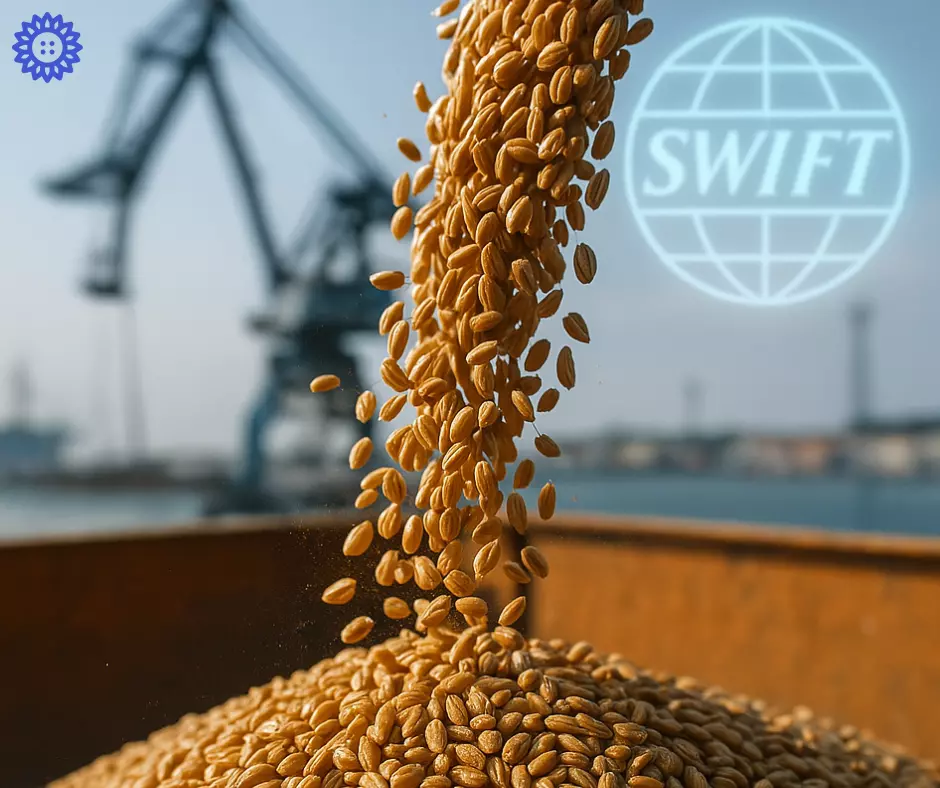26.03.2025, 12:41
Russia Returns to SWIFT: Grain Exports May Accelerate
Wheat futures fell after news from Riyadh: discussions of a grain deal and safe shipping in the Black Sea calmed traders

On Tuesday, March 25, grain markets saw a noticeable drop in prices as traders reacted to unexpected diplomatic developments. Talks between Russia and the United States, held in Riyadh, sparked optimism about stabilizing the Black Sea region and the potential restoration of safe logistics routes.
On the Chicago Board of Trade (CBOT), May futures for soft red winter wheat fell to $199.61 per ton. In Kansas City (KCBT), hard red winter wheat dropped to $209.16 per ton, while in Minneapolis (MGEX), hard spring wheat was trading at $216.23. The decline ranged from 3 to 9 cents per bushel depending on the wheat variety.
The fall was driven not only by geopolitics. According to analysts, favorable weather conditions in the Black Sea region and rainfall in the U.S. grain belt also contributed to price pressure, boosting expectations of a strong upcoming harvest.
Traders paid particular attention to the outcomes of the Riyadh meeting, where, according to Kremlin representatives, the grain deal was also discussed. Russia and Ukraine reportedly reached a preliminary agreement to avoid attacks on energy infrastructure and ensure safe shipping in the Black Sea—similar to the previous Black Sea Grain Initiative.
It was also revealed during the talks that sanctions would be lifted from several Russian banks, including Rosselkhozbank, and they would regain access to the SWIFT system—a move that could significantly simplify export operations.
The analytical center SovEcon raised its March forecast for Russian wheat exports to 1.6 million tons. However, this figure remains below February’s level of 1.9 million tons. The export forecast for the new 2025/26 season was also revised upward to 39.1 million tons.
The European Commission reported a sharp drop in soft wheat exports from the EU: since July 1, 2024, shipments totaled 15.46 million tons, compared to 23.75 million tons during the same period last year. Meanwhile, Japan announced a tender to purchase nearly 120,000 tons of wheat, more than half of which will come from the U.S.
Corn futures also declined amid broader market weakness. May contracts fell to $4.57-3/4 per bushel, while December contracts dropped to $4.49. Investors are awaiting the EIA’s ethanol production report, as well as estimates for planting areas. According to Bloomberg, U.S. corn acreage may reach 94.4 million acres.
Soybeans showed mixed dynamics. May soybean futures dropped slightly to $10.01-3/4, while November contracts remained unchanged. In the current season, EU soybean imports reached nearly 10 million tons, exceeding last year’s volume. Soymeal imports also rose significantly.
On the Paris MATIF exchange, May milling wheat futures dropped to €220.25 per ton (approx. $237.89), and June corn was trading at €213.00. The EU crop monitoring service MARS reported an overall improvement in winter crop conditions across most regions. The projected yield for soft wheat is 6.0 tons/ha, 8% above 2024 and 4% above the five-year average. Exceptions include eastern Ukraine and parts of Romania and Bulgaria, where weather conditions were less favorable.
The oilseed market showed mixed trends: May rapeseed on ICE rose 1.05%, while sunflower seeds on SAFEX and sunflower oil in Rotterdam saw slight declines.
While the easing of geopolitical tensions has not yet triggered a rally in commodity markets, continued progress in diplomacy and the reopening of key export routes may provide a powerful boost to grain trade recovery.
Key Takeaways:
• Wheat futures fell after news from Riyadh: discussions of a grain deal and safe shipping in the Black Sea calmed traders.
• Rain in the U.S. and strong crop conditions in the Black Sea region increased expectations of a strong harvest, putting pressure on prices.
• Rosselkhozbank and other Russian agricultural banks have regained access to SWIFT. Sanctions are lifted, potentially restarting Russian grain exports.